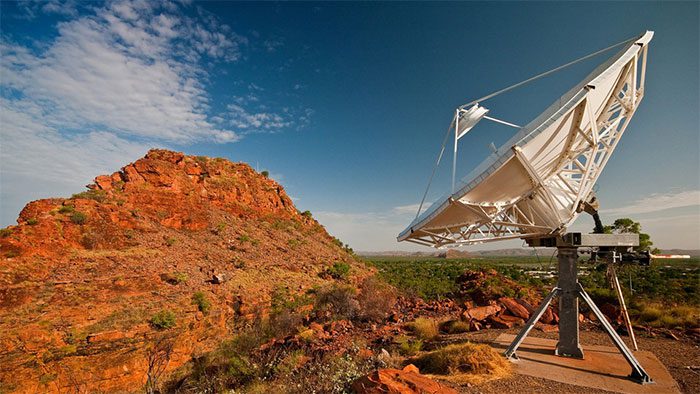This telescope could help humanity enhance its search for extraterrestrial life.
In January, India joined a scientific project involving more than a dozen countries to build the largest telescope in human history. With a combination of radio astronomy and artificial intelligence (AI), this telescope will assist scientists in studying the birth and death of the first stars, as well as searching for planets with extraterrestrial life.
The Square Kilometre Array Observatory (SKAO), valued at €2.2 billion (approximately $2.4 billion), is an ambitious project involving 16 countries, including South Africa, Australia, the United Kingdom, Canada, China, France, Germany, Japan, Italy, the Netherlands, Portugal, South Korea, Spain, Sweden, and Switzerland.

The SKAO telescope project is attracting interest from many countries. (Photo: RT).
India has invested ₹12.5 billion (approximately $150 million) in a facility in Pune, located 156 km east of Mumbai, a city specializing in radio astronomy research. This facility is expected to soon become a data center with supercomputers to process the massive amounts of scientific data obtained from the telescope.
With the help of radio interferometry, astronomers can combine signals from multiple antennas or telescopes to create sharper and brighter images than what is captured by a single dish antenna. This technology will allow for scanning larger areas of the sky using the telescope’s antennas, which can span several kilometers.
Spanning two continents, Southern Africa and Western Australia, the global observatory involves contributions from thousands of scientists and engineers worldwide to develop advanced technologies. They will use SKAO to record data about the universe for 1.5 million laptops each year.
“The plan is to start implementing AI training to decode scientific information this year with approximately two petabytes of data collected and stored by the giant radio telescope. Through this plan, we want to demonstrate that India is ready to actively participate in humanity’s collective effort to search for extraterrestrial life,” said Professor Yashwant Gupta, Director of the National Centre for Radio Astrophysics (NCRA), to RT.
Professor Gupta mentioned that Indian astronomers and engineers will play a critical role in producing the control and monitoring systems for the observatory—essential digital equipment needed to process signals at the facility in Western Australia—and in developing software for most of the SKAO systems.
A section of the SKAO telescope is being constructed in the Karoo region of the Northern Cape province of South Africa: a line of 197 dish antennas spaced 150 km apart. The other half consists of 131,072 2-meter tall Christmas tree-shaped antennas in Western Australia. These locations were chosen to minimize signal interference from nearby human habitation.
According to astronomers, SKAO will help humanity understand the origins of the universe, search for extraterrestrial beings or intelligence, and look for Earth-like planets, as well as explore the birth and demise of millions of distant stars.
Astronomers worldwide estimate that this observatory could receive radio signals from anywhere in the universe for at least 50 years, with satellites expected to be launched in 2027-2028. The radio waves emitted by all celestial bodies provide more accurate information than light waves (which optical telescopes typically use) because they can be obstructed or redirected by dust, clouds, or rain.


















































